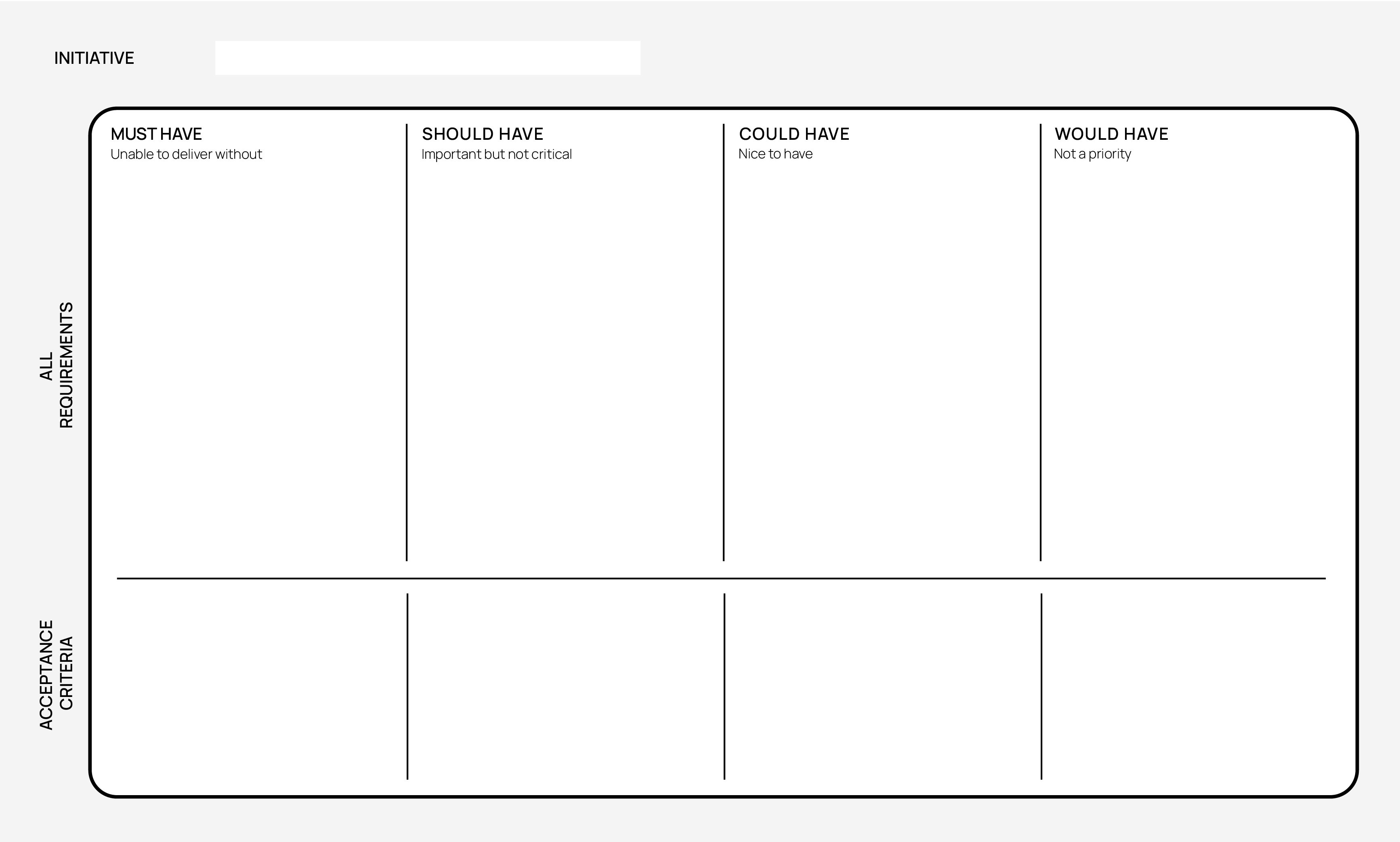MoSCoW (Must or Should, Could or Would)
The MoSCoW method is a prioritisation technique that sorts initiative requirements or deliverables into four groups: Must, Should, Could, and Would. This helps teams focus on what’s most important.
The four categories are:
Must have: Essential requirements that are critical for initiative success. Without these, the initiative would fail.
Should have: Important requirements that add significant value, but the initiative can still succeed without them.
Could have: Desirable requirements that add value if included. These are usually addressed after “Must have” and “Should have” requirements.
Would have: The least important requirements. These can be excluded or postponed, helping to manage initiative scope.
The results
A clear and prioritised list of requirements

When to use it
Project Management: When planning a project or initiative
Product Development: When deciding what item to include in features
Strengths
Easy-to-understand
Simple
Commonly used
Weaknesses
Does not explicitly consider effort or value
Can be subjective
How to use it?
What do I need to start?
Information about the initiative. For example:
- Goals and success criteria
- Outputs expected from the initiative
How to use it?
Who to involve?
MoSCoW is best done with the initiative team. Consider including:
- The person accountable for the initiative
- People who can share insights on end user needs
- People with an understanding of the feasibility of each item, for example those responsible for delivering the work
Step by step
1
List all the requirements
Gather and document all requirements. Consider sources such as stakeholders, research, and initiative briefs.
2
Divide into categories
Categorise each requirement or deliverable into Must have, Should have, Could have, and Would have.
To support categorisation, ask questions like:
Must Have
- Which requirements are absolutely critical for the initiative’s success?
- What will cause the initiative to fail if not implemented?
- Are there any regulatory or compliance requirements that must be met?
Should Have
- What items are important but not essential?
- What items could significantly enhance user experience but are not critical?
Could Have
- What additional items would be nice to include if time and resources allow?
- What can be implemented later without affecting the main initiative goals?
Would Have
- What items are least critical and can be considered for future phases?
3
Refine and review
If there are many items in must have and should have categories, consider further prioritising to ensure the most important tasks are addressed first within each group.
Review the categorised list with the initiative team and important stakeholders.
Adjust categories as needed based on feedback and initiative constraints. Ask questions like:
- Are the categories accurately reflecting initiative priorities?
- Does everyone agree on the categorisation?
- Are there any conflicts or overlaps in the requirements?
4
Define acceptance criteria for each category
Define clear acceptance criteria for all items.
Criteria should be specific and measurable. Ask questions like:
- What defines the successful completion of this item?
- How will we measure its success?
- Who will verify when it’s complete?